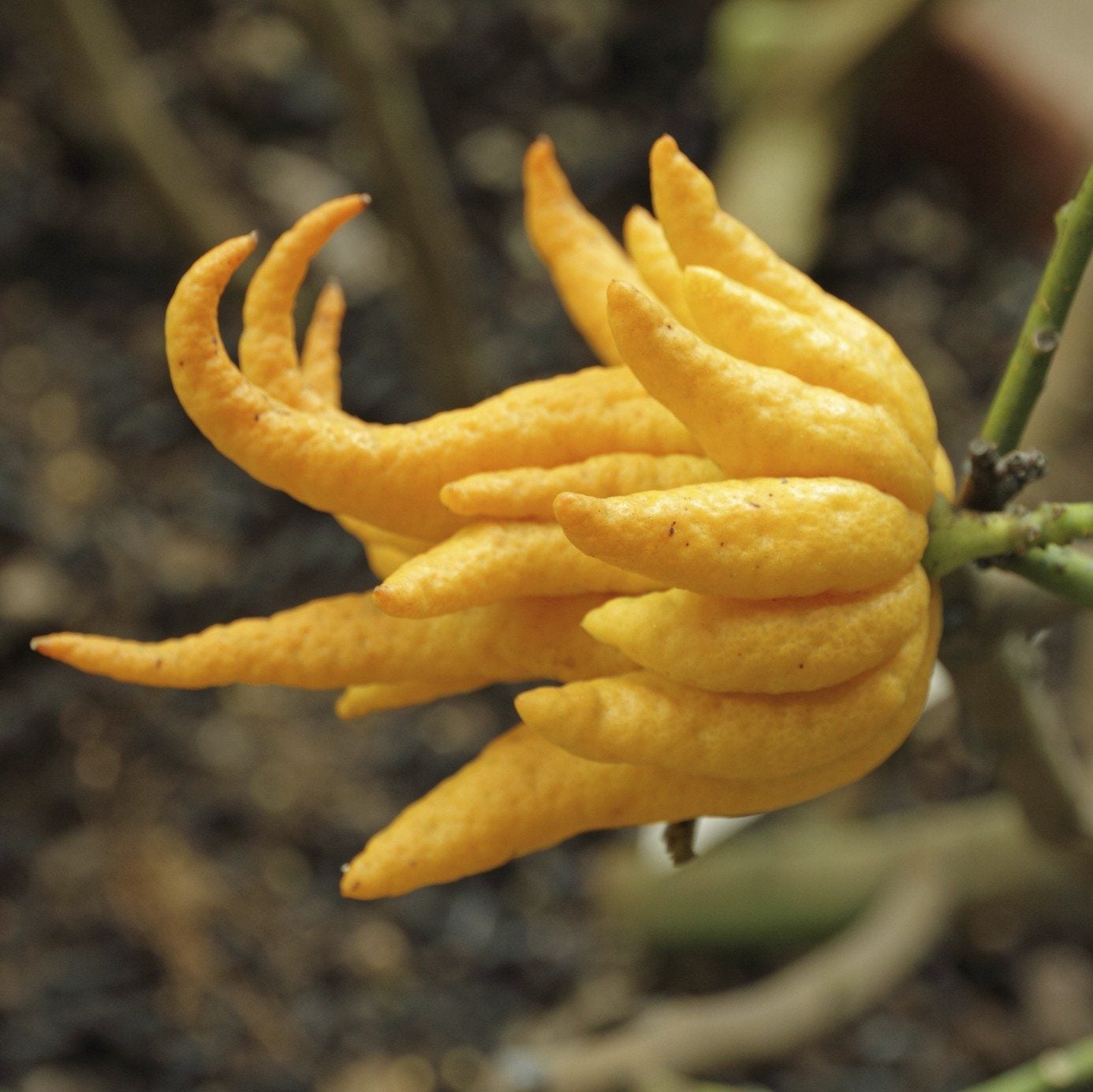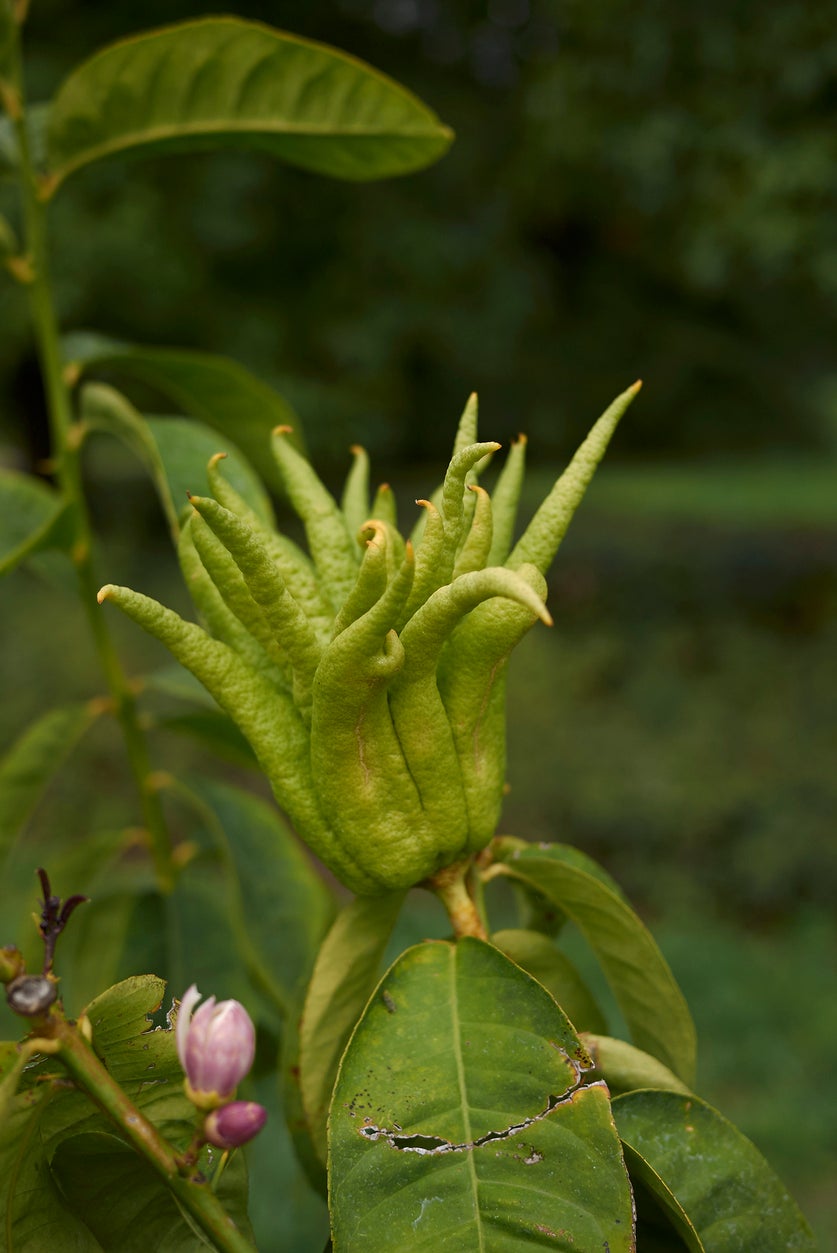Buddha’s Hand Tree: Learn About Buddha’s Hand Fruit

I love citrus and use lemons, limes and oranges in many of my recipes for their fresh, lively flavor and bright aroma. Of late, I’ve discovered a new citron, at least to me, whose aroma rivals all of its other citron relatives, the fruit of Buddha’s hand tree – also known as the fingered citron tree. What is Buddha’s hand fruit? Keep reading to find out all about Buddha’s hand fruit growing.
What is Buddha’s Hand Fruit?
Buddha’s hand fruit (Citrus medica var. sarcodactylis) is a citron fruit that looks like a ghoulish, lemony hand made up of between 5-20 “fingers” (carpels) dangling from a small distorted lemon. Think lemon colored calamari. Unlike other citron, there is little to no juicy pulp inside the leathery rind. But like other citrus, Buddha’s hand fruit is rife with essential oils responsible for its heavenly lavender-citrus scent. The Buddha’s hand tree is small, shrubby and has an open habit. The leaves are oblong, slightly rumpled and serrate. Blossoms, as well as new leaves, are tinted with purple, as are the immature fruits. Mature fruit attains a size of between 6-12 inches (15-30 cm.) long and mature in late fall to early winter. The tree is extremely frost sensitive and can only be grown where there is no chance of frost or in a greenhouse.
About Buddha’s Hand Fruit
Buddha’s hand fruit trees are thought to have originated in northeastern India and were then brought to China during the fourth century A.D. by Buddhist monks. The Chinese call the fruit “fo-shou” and it is a symbol of happiness and long life. It is often a sacrificial offering at temple altars. The fruit is commonly depicted on ancient Chinese jade and ivory carvings, lacquered wood panels and prints. The Japanese also revere the Buddha’s hand and is a symbol of good fortune. The fruit is a popular gift at New Year’s and is called “bushkan.” The fruit is placed on top of special rice cakes or used in the home’s tokonoma, a decorative alcove. In China, there are a dozen varieties or sub-varieties of Buddha’s hand, each slightly different in size, color and shape. Buddha’s hand citron and “fingered citron” are both referring to Buddha’s hand fruit. The Chinese word for the fruit is often mistranslated in scientific research translations to the English “bergamot,” which while another aromatic citrus, is not Buddha’s hand. Bergamot is a hybrid of sour orange and limetta, while Buddha’s hand is a cross between Yuma ponderosa lemon and citremon. Unlike other citrus, Buddha’s hand is not bitter, which makes it the perfect citron to candy. The zest is used to flavor savory dishes or teas, and the entire fruit to make marmalade. The heady aroma makes the fruit an ideal natural air freshener and is also used to perfume cosmetics. The fruit can also be used to infuse your favorite adult beverage; just add sliced Buddha’s fruit to alcohol, cover and let stand for a few weeks, then enjoy over ice or as part of your favorite mixed drink.
Buddha’s Hand Fruit Growing
Buddha’s hand trees are grown much like any other citrus. They will usually grow to between 6-10 feet (1.8-3 m.) and are often grown in containers as bonsai specimens. As mentioned, they do not tolerate frost and can only be grown in USDA hardiness zones 10-11 or in containers that can be moved indoors at the risk of frost. Buddha’s hand makes a gorgeous ornamental plant with its white to lavender blossoms. The fruit is also lovely, initially purple but gradually changing to green and then a bright yellow at maturity. Pests like the citrus bud mite, citrus rust mite and snow scale also enjoy the Buddha’s hand fruit and need to be watched for. If you do not live in the appropriate USDA zones to grow Buddha’s fruit, the fruit can be found at many Asian grocers from November through January.
Gardening tips, videos, info and more delivered right to your inbox!
Sign up for the Gardening Know How newsletter today and receive a free copy of our e-book "How to Grow Delicious Tomatoes".

Amy Grant has been gardening for 30 years and writing for 15. A professional chef and caterer, Amy's area of expertise is culinary gardening.
-
 Looking For Plants To Give You The Soft And Fuzzies? Try These 5 Fuzzy Leaf Plant Options
Looking For Plants To Give You The Soft And Fuzzies? Try These 5 Fuzzy Leaf Plant OptionsLovers of texture, drama, silver foliage and tactile plants will adore these special sensory garden additions. These fuzzy leaf plant options will leave you all aglow
By Susan Albert
-
 Get Ready For A Summer Of Hummers! Grow These Full Sun Hummingbird Plants and Flowers
Get Ready For A Summer Of Hummers! Grow These Full Sun Hummingbird Plants and FlowersIf you’re lucky enough to enjoy a sunny backyard, make sure you are maxing out on your pollinator opportunities and grow these full sun hummingbird plants and flowers
By Tonya Barnett
